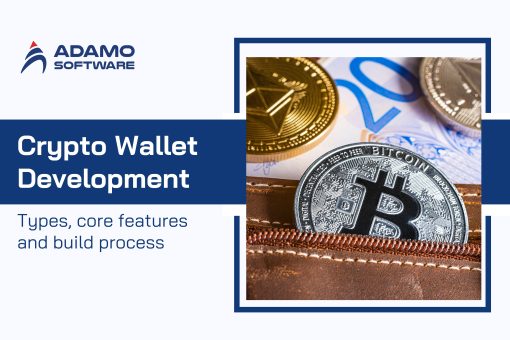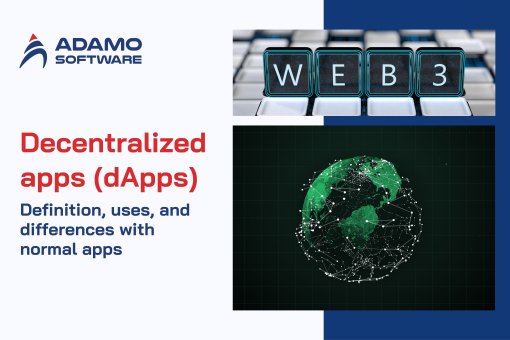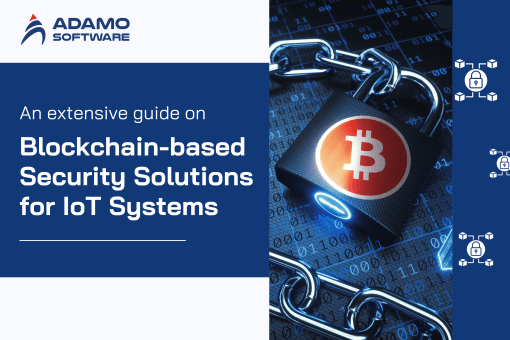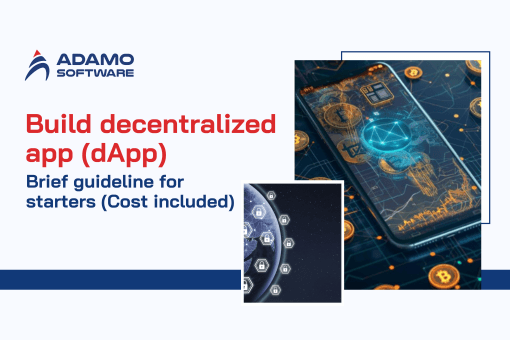Guidelines for successful Cryptocurrency Exchange Software Development
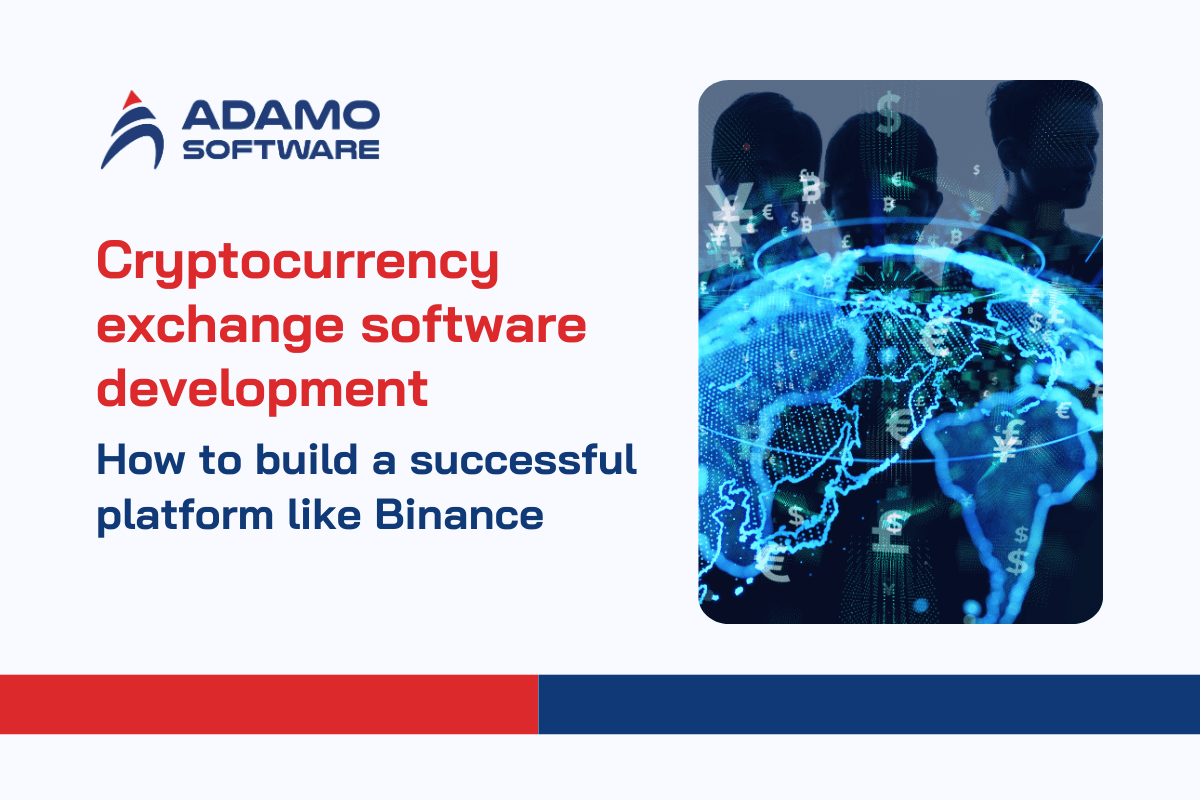
Over recent years, cryptocurrency exchange software development has gained significant momentum. It has become a primary source of interest for business owners and entrepreneurs who want to enter the thriving digital currency market. As cryptocurrency takes off, Binance and other platforms take the lead and build the market. Therefore, knowing how to make a cryptocurrency exchange is essential to take advantage of this trend.
In this article, we shall discuss the different components of cryptocurrency exchange software development to assist you from your very first step. We will guide you in choosing the right stack of technology and the right approach to security.
Whether you want to build a centralized or decentralized exchange, learning cryptocurrency exchange software development principles is crucial. Let’s look at the world of cryptocurrency exchanges and how to beat the competition in a volatile industry.
I. Main types of cryptocurrency exchange software development
There are two primary models of cryptocurrency exchange software development. Those are, of course, decentralized exchanges (DEX) and centralized exchanges (CEX). There are a lot of different features, operational mechanisms, technical requirements, transaction fee structures, you name it, for each one. Both are very worth looking at more closely.
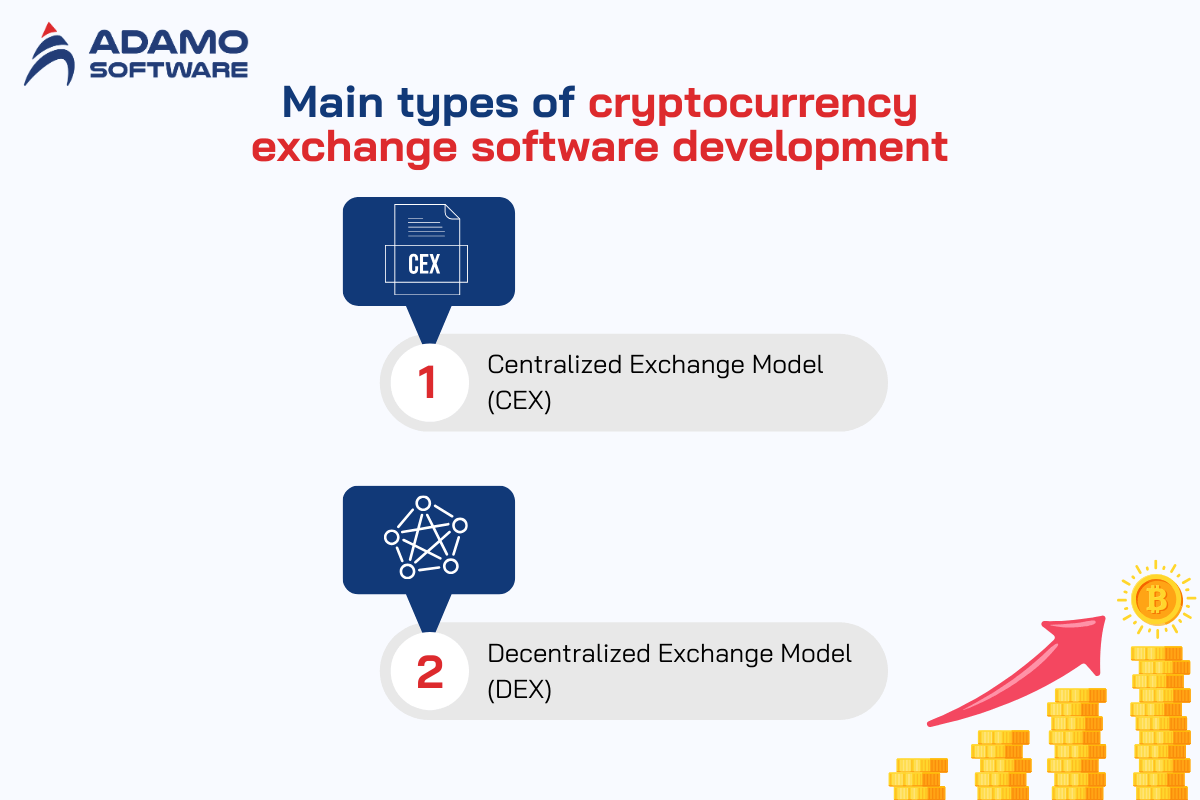
1. Centralized Exchange Model (CEX)
The most widely used model is the centralized exchange (CEX). It works like traditional stock exchanges, which are familiar. With CEX, the platform will be managed by a central authority that holds users’ digital assets. Generally, the CEX model holds a user’s cryptocurrency in its system and offers excellent benefits. Specifically, it helps protect the users’ cryptocurrency and guarantees all functions, such as transactions and updates, are working correctly.
A significant advantage of the centralized model is its higher liquidity. In other words, users don’t need to worry about waiting hours to buy or sell their cryptocurrencies. That’s because there are always enough buyers and sellers on the platform. Additionally, CEX platforms use an order book system to track all transaction orders, making it easy and transparent for traders.
But there’s a risk associated with CEX platforms. Users’ funds are stored in online wallets managed by the exchange, and therefore, they become attractive targets for hackers. Hence, security in cryptocurrency exchange software development is essential because if there is a security breach, a user may lose their assets.
Examples of popular centralized exchanges include Binance, FTX, Bybit, Huobi, Crypto.com, OKEx and KuCoin.
2. Decentralized Exchange Model (DEX)
There is a different way to trade cryptocurrency, which is through decentralized exchanges (DEX). Unlike CEX platforms, DEX has no intermediary, and users simply transact directly with each other. This means that users always have control of their assets, making large-scale security breaches much less likely.
DEX platforms don’t rely on the central authority. Instead, they are based on blockchain technology, and smart contracts manage transactions. Therefore, it helps minimize hacking risks and ensures privacy. Moreover, users don’t have to trust third-party entities for funds, which makes users more autonomous and have more control over their assets.
But DEX platforms aren’t without their problems. For instance, users must be responsible for securing their transactions and managing the risks, as third-party oversight is unavailable. Besides, liquidity on DEX platforms is also lower than on CEX. It can take days or even weeks to be able to buy or sell assets. Network congestion also means exchange rates can be more volatile, and users would see higher transaction costs.
Some of the most famous decentralized exchanges to note include Uniswap, dYdX, PancakeSwap, Serum DEX, among others. For cryptocurrency exchange software development, it is crucial to understand the advantages and disadvantages of DEX to make a functional trading platform.
II. What is Binance? How does it work?
Binance is one of the largest exchanges accessible through the internet, offering many cryptocurrencies for swaps. Another vital role of Binance is providing traders with custodial wallets, allowing them to store their funds safely. One great feature of Binance is the ability to transact at an affordable price when compared to others by using Binance Coin (BNB). Built based on the ERC20 standard, BNB has evolved and is currently based on the Binance Chain.
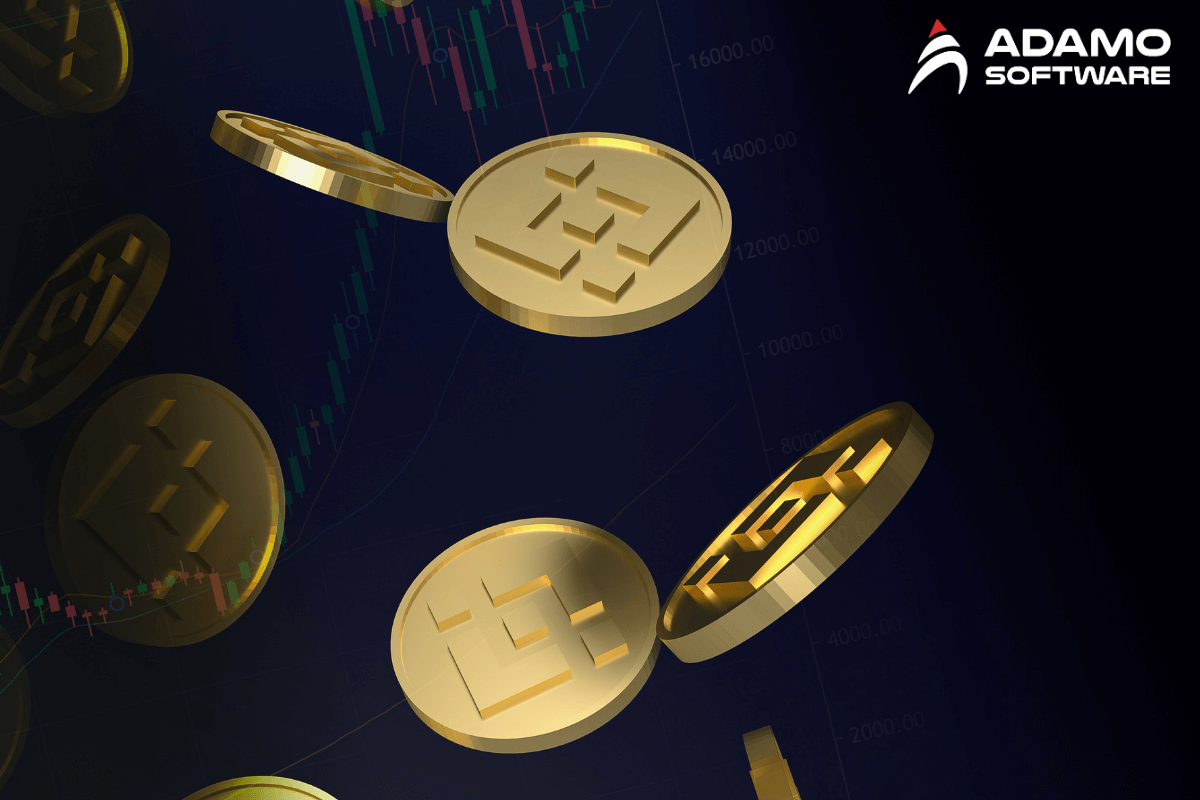
Established in 2017 in Hong Kong, Binance has since become one of the world’s leaders in cryptocurrency exchange services. Because of the challenges facing its regulation in China, the company shifted its base to Malta. This really emphasizes the importance of compliance in cryptocurrency exchange software development. Hence, Binance offers a great model for anyone who wants to launch their cryptocurrency exchange.
Binance has more than 1,338 trading markets and thus has an enhanced multi-tier design. This structure increases safety and enables the platform to handle approximately 1.4 million orders in a second. These capabilities are valuable in the dynamic of exposed cryptocurrency markets.
Besides the profound transaction speed, several attributes help to maximize the convenience of working with the Binance platform. These features extend from enhanced trading options and educational materials to a comprehensive trading environment.
On your journey of cryptocurrency exchange software development, it is crucial to think about the features of Binance. These can guide laying a foundation for a competitive and user-friendly platform. A landscape of cryptocurrency exchange software development will assist you in creating a successful cryptocurrency exchange that fits user needs.
III. Key features of a cryptocurrency exchange platform
If done properly, the cryptocurrency exchange market is undoubtedly one of the most profitable. With the growth of exchange platforms, services can vary significantly. As cryptocurrency exchange rates are unregulated, they can skyrocket to unheard-of heights, and no promises are made that they will stay that way.
A High number of market actors has led to such hype by the question of ‘how to build a cryptocurrency exchange.’ However, as the market progresses, it gains users’ trust and builds more benefits for those who can navigate it. And so, it’s a wonderful opportunity to build a high-quality cryptocurrency trading app. Let’s see what you should focus on when beginning your cryptocurrency exchange software development journey.
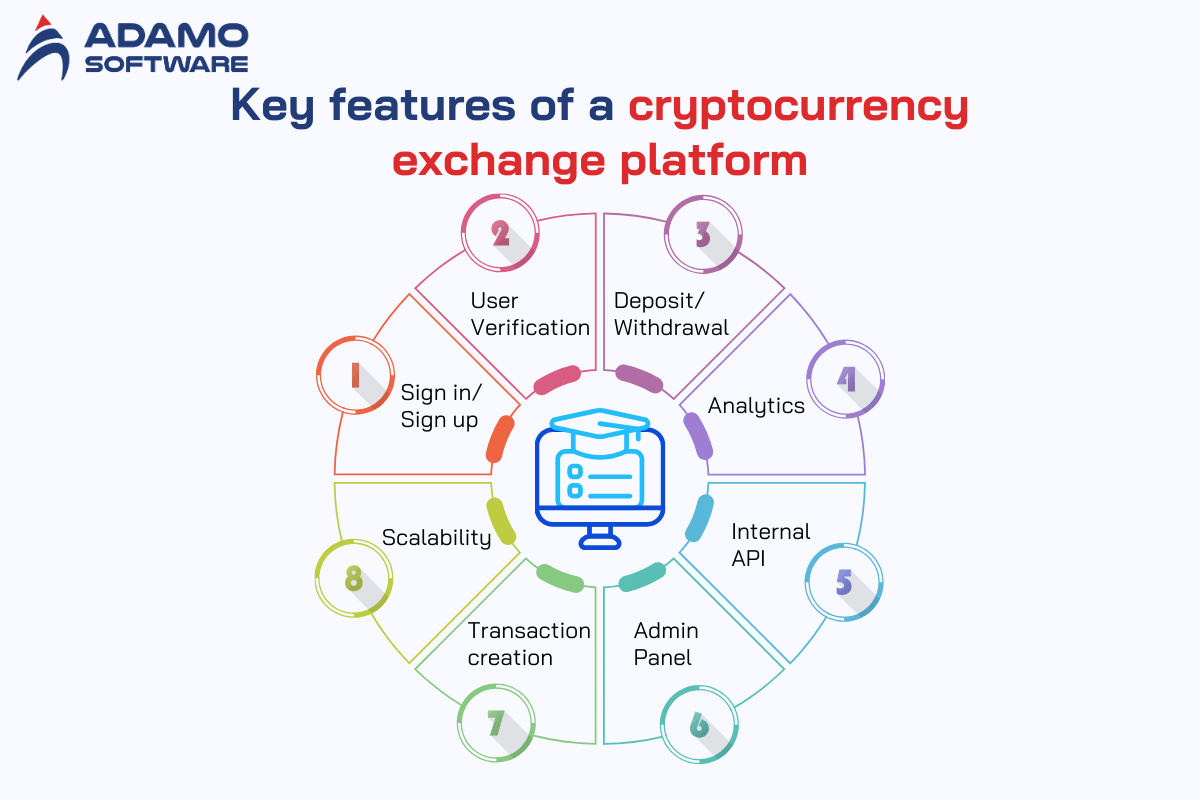
1. Sign in/Sign up
The first interaction your user will have with your platform is via the sign-up or login page. Its main reasons for existence are more than just providing access. It also ensures that such access is not made available to the unauthorized during a hack attempt or login-log-on. Because of this, this functionality has to be developed very well, with the highest security standards. Users may log in and out of the applications using two-factor authentication (2FA) alongside the typical login and password for additional security.
2. User Verification
Building trust in the cryptocurrency exchange market is driven by user verification. It should undergo a long process of checking everyone. This basically means that the withdrawal limits are higher for verified users than for non-verified users. This is how we ensure transaction transparency and the minimum probability of a scam occurring. Additionally, it also addresses how to keep your cryptocurrency exchange software development honest.
3. Deposit/Withdrawal
The deposit and withdraw feature let traders fund their internal Bitcoin wallets using cryptocurrency exchange software. Furthermore, users can withdraw funds to external wallets based on these limits by the platform. With such functionality, a smooth trading experience can be provided.
4. Transactions creation
Every user should be able to buy or sell currencies to other users on the platform. It must be fast and reliable since building trades must happen fast and without system errors. Consequently, the user should have the flexibility of several order types, which he or she can use according to his or her needs.
5. Analytics
A feature that delivers analytics to users is their most valuable tool. This allows you to craft several graphs and statistics for more transparent insight into the market trends. The feature will enable traders to make informed decisions by using real-time data.
6. Internal API
It is necessary to have an internal API to allow automatic trading systems to be created from the cryptocurrency exchange software development tools. It is also helpful to make data exchanges between verified devices. It helps improve user experience and helps automate the process.
7. Admin Panel
A management team on the exchange requires an admin panel. This enables employees to watch trades perform actions within their realm, depending upon their range of access. This feature allows for the exchange to work smoothly and improves security.
These are some of the main features needed in a cryptocurrency exchange application. We have much more to implement for a functional, secure, and user-friendly platform. If you concentrate on these main points, your cryptocurrency exchange software development project will have great outcomes.
IV. 7 steps for a successful cryptocurrency exchange software development like Binance
Building a profitable cryptocurrency exchange is, without a doubt, a complicated task. But any complicated task can all be tackled with the right strategy! Below are seven steps to kickstart your cryptocurrency exchange software development journey:

1. Identify the Problem
The first step is to know what your app intends to solve. Are the current users of this type of app facing problems like high transaction fees, slow payments, or poor security? Look at available solutions, and your cryptocurrency exchange app will work out the best way to deal with these problems.
For example, if friction is within the lengthy verification processes, you can create a streamlined onboarding process. This analysis will guide you to choose the best type of blockchain for your app. It also helps you assess the possible risks from regulatory compliance to cybersecurity. Additionally, you can perform a cost-benefit analysis to determine if the investment is worthwhile. This step puts you a step ahead on your entire cryptocurrency exchange development project.
2. Right Consensus Mechanism
Blockchain frameworks demand user inputs to validate transaction activities. However, your app will require a proper consensus model suited to these decentralized transaction validations. Choose the most suitable consensus technique depending on your app based on analyzing the methods provided.
Some issues to consider include the validators’ identity and how much you trust them. For instance, proof-of-work and proof-of-stake are two types of consensus models with strengths and weaknesses of their respective kinds. Security is also assured in the proof-of-work, but its effectiveness demands a high-power consumption. In contrast, proof-of-stake is energy efficient, and users can earn tokens by staking them. It is, therefore, essential to choose the right mechanism for functionality and security in your cryptocurrency exchange software development.
3. Choose an Ideal Platform
The choice of the appropriate blockchain is crucial to the success of your app. A suitable platform enables you to design a unique web application without the need to start coding the blockchain. Learn about the various platforms to know what defines one platform from another. Here are some popular blockchain platforms to consider:
- BigChainDB
- Ethereum
- Hyper-ledger Fabric
- Quorum
These platforms have different features that will be useful in your cryptocurrency exchange software development, including smart contracts, security, and scalability, among others.
4. Develop a Model
Next, research the various blockchain models that are open to you. These options are public, private, hybrid, or permissioned blockchains. All three models have different uses or functions, and each is useful in some way. For instance, public blockchains are public and transparent, while private ones offer higher control and security for enterprises.
If you have chosen a model, look into how your blockchain is configured. This step is very important since, as was mentioned, the components are fixed once set or configured. As for configurations, it is always advisable to seek a professional’s opinion for better comprehending these settings. They can also help you identify the perfect components to adopt in your model. This will help your cryptocurrency exchange software development run efficiently.
5. User Interface
The user interface of your web application is the “face” that the public sees of your cryptocurrency trading site. A good UI design can significantly improve the content, user engagement, and the number of returns. Upon installing server components, choosing the programming language, other connected databases, and servers you will use for your app is vital.
Make sure the UI is friendly and that all critical features needed to improve trading are included. Some of the significant things to be considered are accessibility, layout and appearance, and mobile responsiveness.
A good user experience means more user interactions and more user retention. Those are the key factors behind the success of your cryptocurrency exchange software development.
6. API Creation
Even though many out-of-the-box APIs can be integrated into your exchange platform, it is critical to develop your API from scratch. Specific actions that will be incorporated include trading pairings, address creation, data verification, contract execution, and data storage or retrieval.
It’s also critical to think about the use of third-party APIs for such information as markets, payment, and bots. The affluent customization for the user interface and versatility are key consideration factors when developing your cryptocurrency exchange software.
Ensure your API has good documentation since developers must know or understand how it functions. Documentation can also help add detail or profundity long after the work is complete.
7. Test the App
The last step that should not be overlooked during the cryptocurrency exchange software development is the testing of your app. Using the Minimum Viable Product (MVP) development approach is recommended, which consists of creating a POC solution. Use this POC to get insights on problems like latencies, memory consumptions, system crashes, and maximal capacity utilization.
Moreover, you can do some stress testing to discover how well your app works for a large number of transactions. When any problem is identified, other tests are conducted to identify other shortcomings.
Further improve the concept to the stage where it can work as an established and running cryptocurrency exchange. Real users can also be used in this phase to give feedback about any pain points they are still experiencing when using the product.
Also read: Cryptocurrency exchange development cost: Considerations for startup
V. How to earn money from your cryptocurrency app?
The last process of developing a crypto trading app is deciding on strategies through which the app earns money. There are various ways to monetize a crypto trading app, including:
- Fees and Commissions: You can require users to pay fees and commissions for using your platform. These fees can be the depositing and withdrawing fees, trading fees, and exchange fees. Further, you can have a paid subscription when charging people for enhanced features such as trading tools and indicators.
- Ads and Sponsorships: Monetize your app through impression and click prices that you receive from users through display ads and sponsorships. Besides, you can cooperate with crypto-related businesses and share revenue from leads and sales within your application.
- Subscriptions and Memberships: Provide subscriptions and memberships to give your users access to first-hand information and special offer news, analysis, trading signals, and tips. Membership can also help create a sense of community through features like chat rooms, forums, or groups.
By implementing these strategies in your cryptocurrency exchange software development, you can effectively generate revenue and ensure the long-term success of your trading app.
VI. How can Adamo Software help?
Are you considering cryptocurrency exchange software development? We would be thrilled to help you out!

Adamo Software is a Vietnam-based software development company with expertise in various sectors. We are well-positioned to assist you in a successful cryptocurrency exchange software development project.
Our professionals have the necessary experience to help you create perfect exchange platforms. This is possible thanks to our understanding of various challenges associated with cryptocurrency exchange software development.
We adopt blockchain, multi-factor authentication, and encryption to your platforms for secure transaction and data protection. Moreover, we develop user-friendly interfaces with relaxed controls so that professional speculators and novices can readily access the trading area.
Contact us today to get a consultation!






